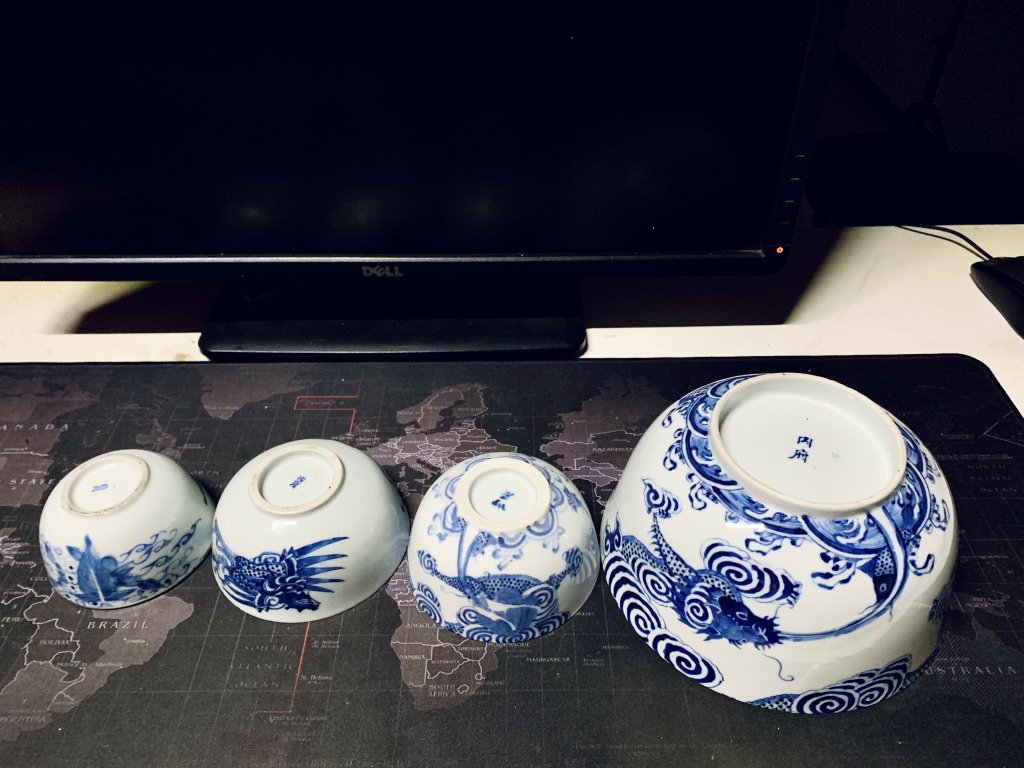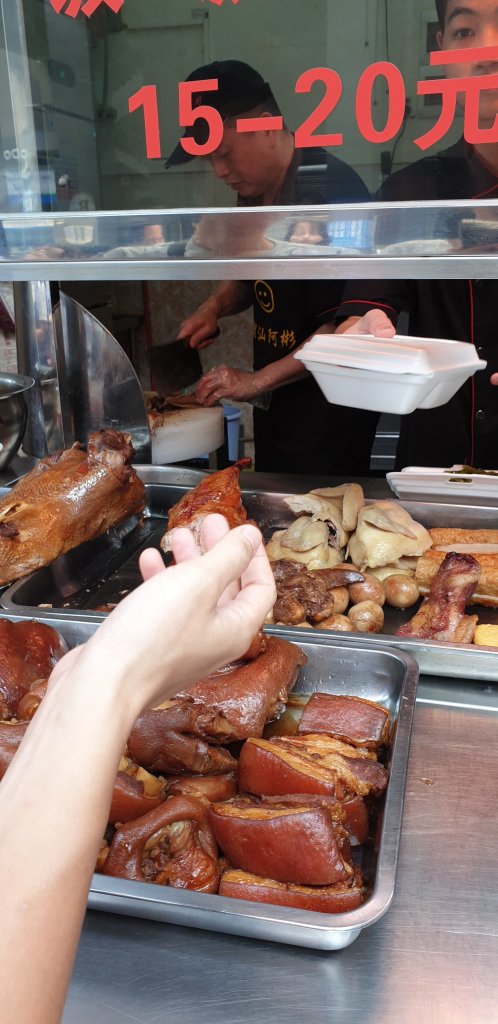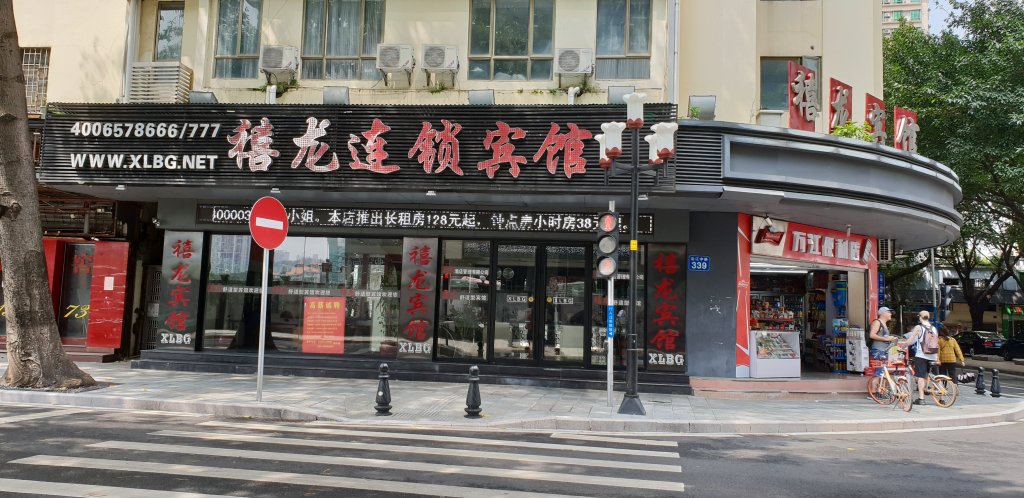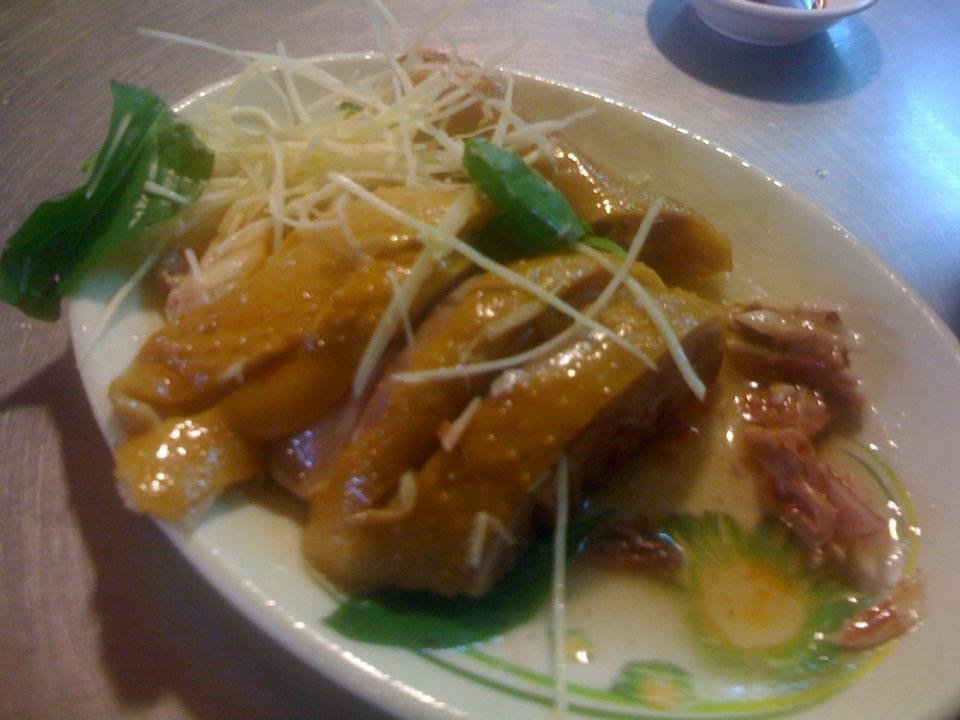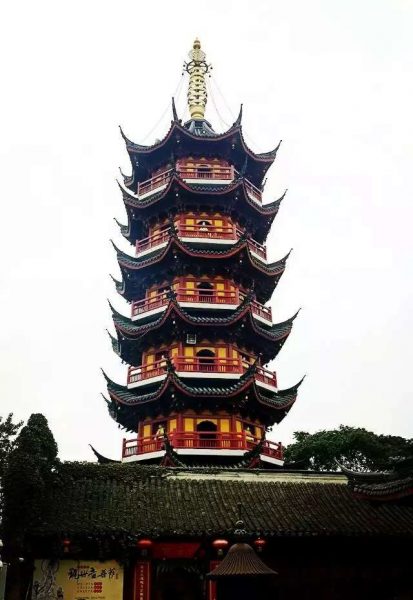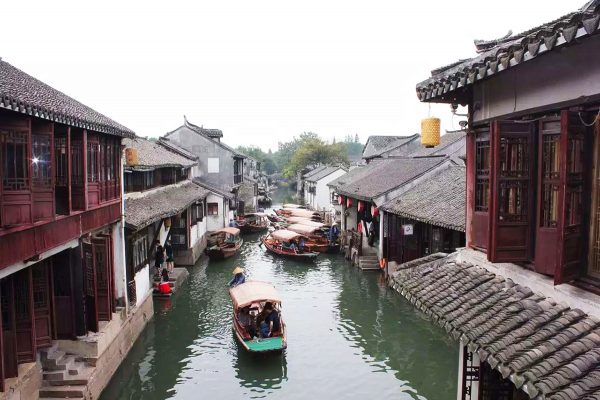Trường phái ẩm thực Trung Hoa: Giang Tô
Một số món ăn nổi tiếng của trường phái ẩm thực Giang Tô Trung Quốc
1. Cơn chiên Dương Châu (扬州炒饭 - yáng zhōu chǎo fàn)
2. Vịt muối Nam Kinh (盐水鸭 - yánshuǐyā)
Nếu bạn chưa bao giờ đến một khu vực trên thế giới nơi người dân cuồng vịt thì có lẽ bạn nên ghé thăm tỉnh Giang Tô. Từ loại vịt được tẩm ướp đến vịt quay rồi từ thịt vịt đến tiết vịt đều được thưởng thức hết.
View attachment 6395163
Nam Kinh là thủ phủ của tỉnh Giang Tô, và du khách ghé thăm không ai là không biết đến món vịt muối trứ danh của nơi đây. Lớp thịt vịt mang màu trắng ngà, rất mềm, có vị ngọt nhẹ, mỡ mà không ngấy. Món ăn nổi tiếng của Giang Tô này có hương vị thơm ngon, đậm đà, có thể chính phục bất cứ ai, kể cả những thực khách khó tính nhất. Một số người dùng vịt muối Nam Kinh như món nhắm khi uống rượu
Hàng năm, cứ vào khoảng giữa thu, khi hoa quế đang mùa nở rộ, người ta lại bắt đầu rộn ràng chờ được nếm thử món ăn này, vì đây chính là thời điểm lý tưởng nhất để chế biến vịt muối. Cũng vì lý do đó mà vịt muối Nam Kinh còn được gọi bằng cái tên mỹ miều là vịt quế hoa. Thậm chí, nhiều người chọn Nam Kinh làm điểm đến du lịch cũng chỉ vì muốn được một lần thưởng thức món vịt muối nức tiếng này.
View attachment 6395154
Phải mất khoảng hai ngày để ướp vịt đúng cách với muối và hạt tiêu Tứ Xuyên trước khi có thể luộc trong nước dùng với gừng, hành lá, đường phèn, muối biển, hoa hồi, quế, thìa là, hạt tiêu Tứ Xuyên, vỏ cam quýt khô và rễ cam thảo. Ngay cả khi vịt đã được ninh trong nước dùng, vịt vẫn cần để ngấm qua đêm trước khi phục vụ thực khách
Hóa ra thớt này, là tập hợp những bài dịch quảng cáo không công cho ẩm thực Trung Quốc à ???
 TAG: JIANGSU
Jiangsu Local Snacks
TAG: JIANGSU
Jiangsu Local Snacks
Since Jiangsu or “Su” cuisine is often praised as one of the Eight Culinary Traditions of Chinese Cooking, it goes without saying that the snacks on offer in this province are plentiful and delicious! This style of cooking places emphasis on presentation and the natural essence of ingredients, resulting in dishes that are visually stunning and richly flavourful without being overly seasoned. Soups play a starring role in most snack dishes and are highly acclaimed for being light and fresh, rather than oily or greasy. With palate-cleansers that are this scrumptious, you might even forget about the main course!
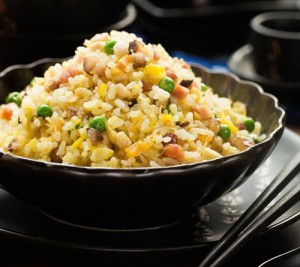 Yangzhou Fried Rice (扬州炒饭)
Yangzhou Fried Rice (扬州炒饭)
Also known as Yangzhou Egg Fried Rice, this staple dish hails from the city of Yangzhou and is one of the most immediately recognisable dishes in Jiangsu, since it’s served in Chinese restaurants throughout the world. The ingredients of this hearty dish vary from restaurant to restaurant, but some of the staple items include: cooked rice that is preferably a day old, since freshly cooked rice is often too sticky; cooked shrimp; diced char siu or Chinese barbecue pork; chopped spring onions; eggs; and fresh vegetables such as peas, Chinese broccoli, carrots, and corn. Like glittering jewels in a fine brooch, these multi-coloured ingredients add a touch of vibrancy to the dish.
According to local legend, the dish was brought to the region during the Sui Dynasty (581-618) by a powerful imperial minister named Yang Su. Fried rice was one of his favourite foods and, when he was escorting Emperor Yangdi through the district of Jiangdu, he introduced his recipe to the people of Yangzhou. There are two ways of cooking this sumptuous dish based on when and how the egg is scrambled. The first, known as “silver covering gold”, is when the egg is scrambled separately and then mixed in with the rice. The second, known as “gold covering silver”, is when the liquid egg is poured over the rice and vegetables as they are being stir-fried. It’s rumoured that the finest chefs in Yangzhou can cook the dish with a rice grain to egg piece ratio of 5:1 or even 3:1. Talk about precise!
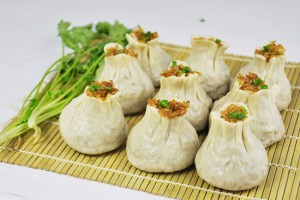 Jiangnan Shumai (江南烧卖)
Jiangnan Shumai (江南烧卖)
Shaomai or shumai in Chinese cuisine is a traditional type of bite-size pork dumpling served as dim sum. They’re living proof that good things definitely come in small packages! They are believed to have originated from the city of Hohhot in Inner Mongolia, but the ones served in the Jiangnan region of Jiangsu, just south of the Yangtze River, are considerably different to their northern counterparts. In this variation, the wrapping for the dumpling is much larger and tougher. The filling is made up of glutinous rice and pork pieces that have been marinated in a delectable mixture of Chinese rice wine (Shaoxing wine) and soy sauce. They are normally steamed with pork fat to keep them tantalisingly moist and are markedly larger than other types of shaomai. Most restaurants typically serve them as an appetising accompaniment to a cup of tea. Once you’ve tried these juicy little parcels, you’ll never look at afternoon tea the same way again!
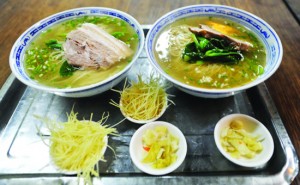 Fengzhen Noodles (枫镇大面)
Fengzhen Noodles (枫镇大面)
These enticingly aromatic noodles originate from Fengqiao Town in Suzhou and are said to have the fragrance of rice wine. So be sure not to breathe in too deeply, or you might end up drunk! The delicate noodles are first boiled before being served in a light broth made from stewed eel bones, river snails, rice wine, and soy sauce. However, the highlight of this dish is considered to be the topping. Thick, streaky slices of pork are marinated in rice wine and stewed for at least four hours before being used as a garnish. The resulting dish is an ideal combination of subtle flavours that melt in the mouth and glance off the tongue. Fengzhen Noodles are typically served during summer, as they are believed to cool the palate during the hotter weather. So if you’re traveling in Jiangsu, be sure to use your noodle and order a bowl of this tasty treat!
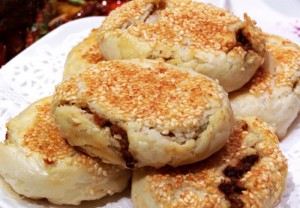 Huangqiao Sesame Cake (黄桥烧饼)
Huangqiao Sesame Cake (黄桥烧饼)
Sesame seed cakes are thought to be the oldest style of cake in Jiangsu and the earliest record of them, written by an agronomist named Jia Sixie, dates all the way back to the Northern Wei Dynasty (386–535). So it seems the locals have had plenty of time to perfect the recipe! Unsurprisingly, this particular type of sesame cake originates from the town of Huangqiao. According to local legend, sometime during the Qing Dynasty (1644-1912), the magistrate of Rugao County was visiting the region when he tried a few of these crispy cakes. On returning home, he was so taken with them that he began getting serious cravings. Unfortunately, the counties were over 30 kilometres (19 mi) and it seemed impractical to go all that way just for a snack. So he sent one of his servants to buy the cakes for him instead!
The cakes themselves come in a variety of shapes and sizes, from the typical round and oval ones right through to triangular and square ones. Unlike conventional cakes in the West, Huangqiao sesame cakes come in sweet and savoury varieties. This means the basic dough can vary, as sweet dough incorporates caramel while savoury dough includes pork suet and onion. More sophisticated varieties of this crunchy snack include fillings such as pork, sweet osmanthus paste, crab roe, jujube paste, chicken, and shrimp. So, if you happen to spot a tray full of these fluffy treats, choosing one can feel like a game of roulette!
Jiangsu Cuisine
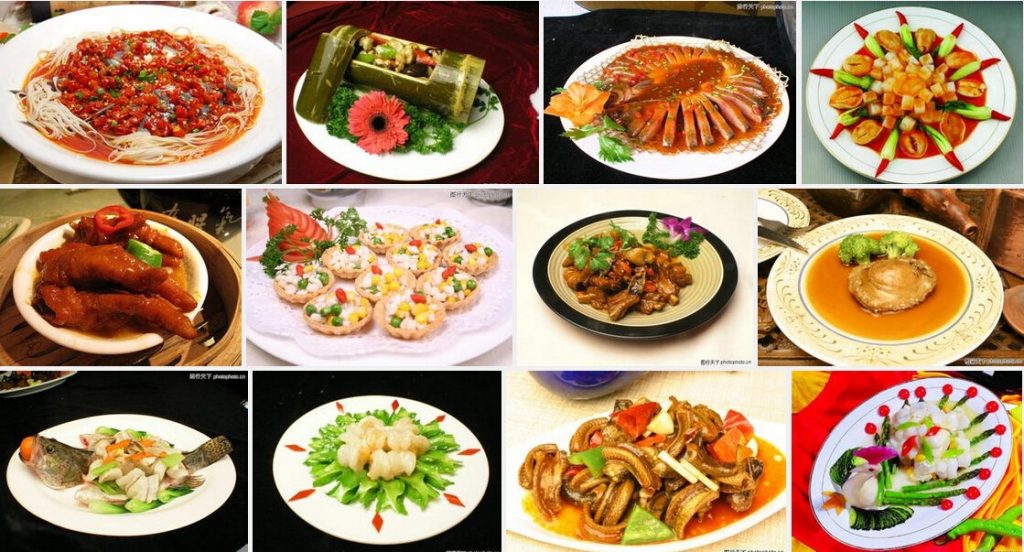
Jiangsu or “Su” cuisine is heralded as one of the Eight Culinary Traditions of Chinese Cooking and its subgroup, Huaiyang, is even considered to be among the Four Great Traditions of Chinese Cuisine. It was once the second most popular style among the imperials and is now frequently served at state banquets. With that in mind, you’re pretty much guaranteed to enjoy your stay in Jiangsu; or at least, your stomach is! This style of cooking places emphasis on presentation, meaning local specialities are as visually pleasing as they are mouth-wateringly delicious. Chefs train for years in order to perfect how to carve, sculpt, shape, and pair certain foods for the ultimate visual feast.
In terms of flavour, this style aims to draw out the natural essence of its ingredients through various cooking techniques, so seasonings and spices are used sparingly. This means that its signature dishes are sumptuously aromatic, slightly salty, moderately sweet, and glide across the tongue, leaving a strong sense of flavour without being oily or greasy. The ingredients are usually seasonal and are chosen not only for their taste, but also for their unique medicinal properties. Since Jiangsu is a coastal province, fish and other types of seafood feature prominently, along with pork, lotus root, Chinese chestnuts, water bamboo, and water chestnuts. With all of this aquatic goodness, you’ll practically be swimming in scrumptious food!
There are four different regional styles of Jiangsu cuisine: Jinling, Suxi, Xuhai, and Huaiyang. The Jinling style originated from the provincial capital of Nanjing and is famous for its duck dishes, as well as its fine cutting techniques and delicate preparation. The Suxi style developed around the cities of Suzhou and Wuxi, and is distinctly sweeter than the other styles, with a strong emphasis placed on the use of seasonal vegetables.
The Xuhai style, which originates from the cities of Xuzhou and Lianyungang, is the least famous of the four and combines a perfect mixture of sweetness, sourness, bitterness, heat, and saltiness. Last but certainly not least, Huaiyang style is praised as the finest of the four and is centred on dishes from the cities of Yangzhou and Huai’an. It is rumoured to have originated from chefs who worked for wealthy Qing Dynasty (1644-1912) salt merchants living in Yangzhou, proving once and for all that a golden key can open any door, particularly the ones to the best restaurants!
Squirrel-Shaped Mandarin Fish (松鼠鳜鱼)
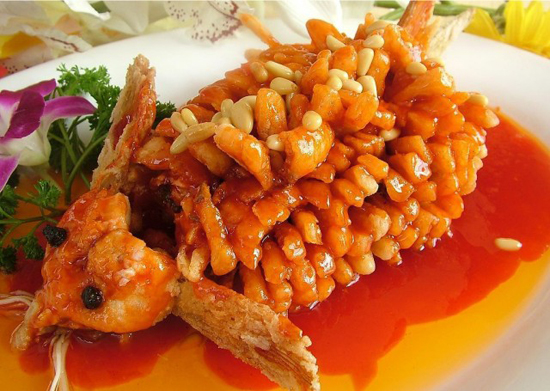
This dish is so famous and so prevalent throughout China that it’s now considered one of the emblematic dishes not only of Jiangsu cuisine, but of Chinese cuisine as a whole. Yet you wouldn’t be the first person to be confused by its rather unusual name! According to local legend, the Qianlong Emperor of the Qing Dynasty was touring the area south of the Yangtze River when he decided to stop at a restaurant in Suzhou. The chef knew that he had to pull out all of the stops to impress the Emperor, so he took the meatiest mandarin fish, covered it in egg-yolk paste, and fried it before delicately cutting it, shaping it, and serving it with his homemade sweet and sour sauce. The Emperor praised the dish for its novel presentation and savoured the crispy golden strips of fried fish.
From then on, Squirrel-Shaped Mandarin Fish has remained one of the finest gourmet dishes in China. In order to make the dish, the chef first cuts the flesh of the mandarin fish into a delicate pattern resembling a blossoming flower and then covers the tender white flesh in a mixture of starch and eggs. The fish is deep-fried until it turns a crispy golden brown before being arranged on the plate with its mouth wide-open and its tail bent upward. A sizzling sweet and sour sauce is then poured over the freshly fried fish as it is presented to the lucky gourmand. The golden-brown colour of the flesh and the shaping of the fish are designed to make it look like a squirrel, while the crackling sound of the hot sauce being poured over the meat is said to resemble a squirrel’s chirrup. Moulding a fish to look like a squirrel may seem a little
fishy, but trust us; this dish is as delicious as it is strange!
Nanjing Salted Duck (盐水鸭)
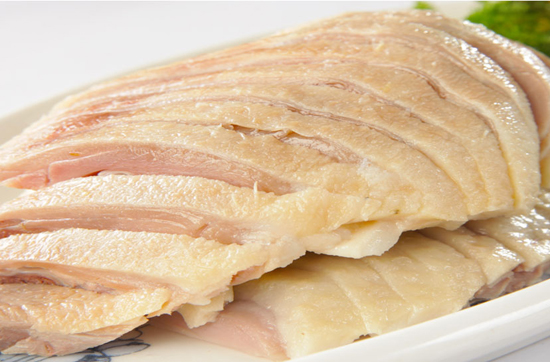
According to local legend, when Nanjing was the imperial capital, the Hongwu Emperor of the Qing Dynasty was desperate to solve the city’s noise problem and issued an edict demanding that all of the resident roosters be killed, in order to stop them from waking him up. The city was certainly quieter, but people suddenly realised that they had no chickens to eat! The citizens turned their hungry gaze towards the local duck population and this is supposedly the reason why Nanjing is so famous for its duck dishes. And it seems the locals have really gotten creative with this one ingredient, because Nanjing Salted Duck is one of the most complicated dishes to cook!
It takes approximately two days for the duck to properly marinate in a rub made from Sichuan peppercorns and salt before it can be boiled in the master stock, which is a fragrant broth made from ginger, spring onion, rock sugar, sea salt, star anise, cinnamon, fennel, cumin, Sichuan peppercorns, whole dried citrus peel, and liquorice root. Even after the duck has been simmered in the broth, it still needs to be left to infuse overnight before it can be served. So, if you’re feeling a little bit
peckish and want some fast food, you might want to reconsider this dish because the only thing you’ll be consuming is time!
Nanjing Salted Duck is celebrated for its tender meat and fatty but not overly greasy flavour. Supposedly the best time to eat it is shortly before or after mid-Autumn, during the sweet osmanthus blooming season. During these months, osmanthus is added to the spice mixture to give the duck a boost of aromatic flavour. Just start preparing right away, or the season might have ended before you even finish cooking the duck!
Lion’s Head (狮子头)
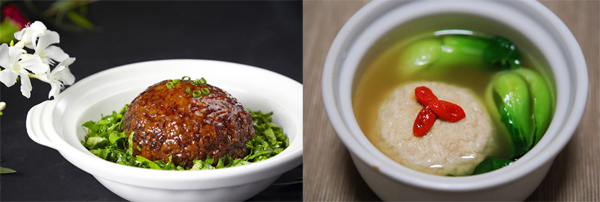
Unusual names seem to be something of a trend in Jiangsu cuisine! Once again, this dish is named for its shape rather than its content, so don’t expect to be presented with a roaring lion’s head anytime soon. It is made using minced meat (usually pork but occasionally beef) that has been mixed with chopped water chestnuts, spring onions, ginger, and eggs for texture and then rolled into large meatballs, about the size of your hand. It is imperative to use fatty meat, as lean meat will result in the meatballs being too dry.
There are two distinct varieties of this robust dish: White or Plain Lion’s Head and Red Lion’s Head. The plain variety is simply stewed or steamed with Chinese cabbage and served with a clear soup, while the red variety is stewed in soy sauce with either Chinese cabbage or bamboo shoots and tofu. The large meatballs are said to resemble the head of a lion and the surrounding cabbage looks like its mane, which is how the dish earned its extraordinary name. These ferocious meatballs are packed with umami flavour and a pleasant saltiness that just glances across the tongue.
The Presidential Palace
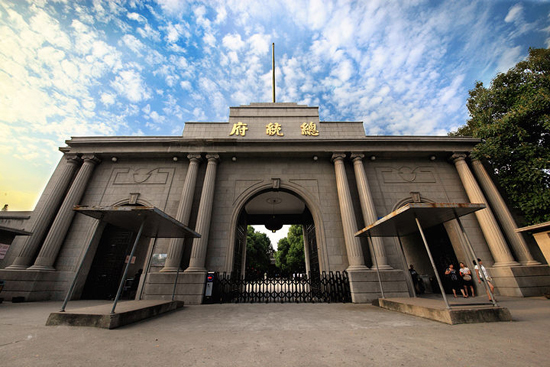
The Presidential Palace is one of the more unusual tourist attractions in Nanjing, as its history spans both imperial and modern China. This has resulted in a hectic mixture of traditional dynastic and contemporary architectural styles, with a post-colonial flair added in for good measure! Nowadays it is known as the China Modern History Museum and, spanning a colossal area of over 90,000 square metres (960,000 sq. ft.), it is the largest modern history museum in the country.
The palace was originally built as a mansion for the Prince of Han during the Ming Dynasty (1368-1644), but was appropriated during the Qing Dynasty (1644-1912) and made into a fabric manufacturing warehouse. In one fell swoop, the palace literally went from riches to rags! In 1863, revolutionaries of the Taiping Rebellion occupied Nanjing and seized the palace. They instated the city as the capital of the Taiping Heavenly Kingdom (1851-1864) and renamed the palace “Tianwang Fu” or “Palace of the Heavenly King”, officially making it the imperial abode of their leader Hong Xiuquan.
When the Qing court retook Nanjing in 1864, Commander Zeng Guofan ordered large parts of the palace to be destroyed and a new palatial residence was erected there in a far more neoclassical style. In 1870, it served as the Office of the Viceroy of Liangjiang, a government official who was charged with the administration of modern-day Jiangsu, Anhui, and Jiangxi provinces. Most people are lucky enough to get their own office space, let alone an entire palace!
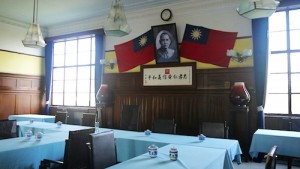
When the Qing Dynasty finally collapsed as a result of the Xinhai Revolution in 1912, Sun Yat-sen
[1] was sworn in as the first provisional President of the Republic of China and decided to take offices at the Presidential Palace. However, he only stayed there for a short period of time and it wasn’t until 1927 that the palace became an official symbol for the Nationalist Government. Chiang Kai-shek, who was leader of the Chinese Nationalist Party at the time, transformed the appearance of the palace and made it his base of government. It was briefly lost when Japanese forces occupied Nanjing during the Second Sino-Japanese War (1937–1945) and was used by Wang Jiwei, an ex-member of the Chinese Nationalist Party, as the base for the Reorganised National Government of the Republic of China
[2]. However, it was swiftly reoccupied in 1946 and was re-established as the Office of the President from 1948 right up until Communist forces captured Nanjing in 1949.
In the late 1980s, the palace was converted into the China Modern History Museum, a museum exclusively dedicated to China’s history from the 20th century onwards. The exhibitions place particular emphasis on the establishment of the Republic of China (1912-1949) and the beginning of the People’s Republic of China. Nowadays it is one of the few places in the country where the flag of the Republic of China can be legally displayed. So if you’re looking for something a little more controversial on your trip to Nanjing, the Presidential Palace is the place to be!
The palace itself is split into three main areas: the Central Area, where the main seat of the Nationalist Government was located; the West Area, where you’ll find the offices of Sun Yat-sen and Xuyuan Garden; and the East Area, where the Executive Department, the stables, and the East Garden can be found. Historical displays and exhibitions are frequently held throughout these three sections.
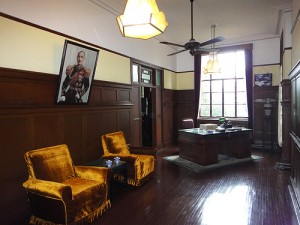
The Zichao Building in the central area was built in 1934 and was the site of major political change, as it was often the place where important governmental meetings were held. One can only imagine the heated discussions that once took place within its walls. Yet perhaps the highlight of the palace is Xuyuan Garden, which was originally built during the Ming Dynasty and was named after Prince Zhu Gaoxu. It is an exquisite little slice of nature that was designed after the southern style of landscape gardening, and over 4,000 square metres (43,000 sq. ft.) of its surface area is taken up by the Taiping Lake. It is occasionally referred to as Xiyuan or the “West Garden” because of its location in the western part of the palace.
It features an elaborately decorated boat made entirely of stone known as Buji Zhou, which was masterminded by the Viceroy of Liangjiang in 1746 and was even personally inscribed by Emperor Qianlong of the Qing Dynasty during his tour of southern China. The garden is also host to a plethora of pagodas and pavilions, including the magnificent Wangfei or “Forget to Fly” Pavilion. According to local legend, it was so-named because birds that migrated to the garden would nest in this pavilion and its beauty would captivate them so much that they’d forget to leave!
The Office of the Provisional President is also located here and is one of the finer features of the complex, as the building itself is a yellow bungalow designed after the Italian renaissance style. It served as the offices of Sun Yat-sen from January to April of 1912 and, with its refreshing blend of ancient Chinese and modern European features, it perfectly epitomises the style of the palace itself.
[1] Sun Yat-sen (1866-1925): A Chinese revolutionary who played an instrumental role in overthrowing the Qing Dynasty, abolishing imperial rule and founding the Republic of China. He became the first president of China in 1912.
[2] The Reorganised National Government: This was the name of the collaborative ruling party that was established by Wang Jiwei, a former member of the Chinese Nationalist Party, and the Japanese army during the Second Sino-Japanese War (1937–1945). It was widely regarded as one of the many puppet states used by the Japanese to rival the legitimacy of the nationalist government.
Join our travel to visit the Presidential Palace: Explore Chinese Culture through the Ages
Nanjing
Having served as the capital for 7 separate kingdoms, one dynasty, and one revolutionary government, Nanjing is a city steeped in history and is now ranked as one of the Four Great Ancient Capitals of China. It was also the capital of the Republic of China from 1927 to 1949. As a testament to its ancient roots, it is still surrounded by a 48-kilometre-long (30 mi) city wall, which was constructed during the Ming Dynasty (1368-1644). Nowadays it serves as the provincial capital of Jiangsu province, but its long and illustrious history is flecked with success and tragedy.
It all began during the Three Kingdoms Period (220-280 AD), when the city of Jianye (modern-day Nanjing) was designated as the capital of the State of Dong or “Eastern” Wu. It swiftly grew to become the political and cultural centre of southeast China, and was soon to enjoy a long career as the capital for many southern dynasties. The Eastern Jin (317–420), Liu-Song (420–479), Southern Qi (479–502), Southern Liang (502–557), and Southern Chen (557–589) dynasties all set their capital here, each time contributing to the culture and prosperity of this venerated city. In short, Nanjing was China’s Southern Belle!
Yet that all changed during the Sui Dynasty (581-618), when the city was conquered, razed to the ground, and reduced to a small town. It wasn’t properly rebuilt until the Tang Dynasty (618-907), but rose to glory once again as the capital of the Southern Tang Dynasty (937–976) during the Five Dynasties and Ten Kingdoms Period (907-960). The city’s success reached its pinnacle when it was instated as the capital of the Ming Dynasty, for the first time becoming the capital of China proper. It was renamed Yingtianfu or “Responding to Heaven” in 1368 by the Hongwu Emperor, who built the city walls and a grand imperial palace for himself. After all, there’s nothing like the gift of giving, particularly when you’re giving to yourself!
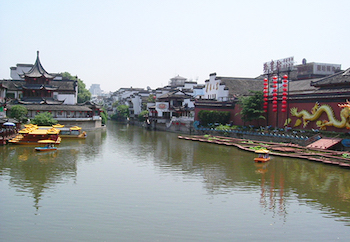
In 1421, the Yongle Emperor moved the capital to Beijing but maintained the importance of Yingtianfu, renaming it “Nanping” or “Southern Capital” and making it the country’s subsidiary capital. During the Qing Dynasty (1644-1912), it was again renamed to Jiangning and, with all of these name changes, it’s a small wonder the locals ever knew what to call it! From then onwards, the city would unfortunately be racked by warfare. In 1853 it was occupied by the revolutionary forces of the Taiping Rebellion and was made the capital of the Taiping Heavenly Kingdom (1851–1864), enduring another name change as Tianjing or “The Heavenly Capital”.
The Qing troops finally retook the city in 1864, but lost it to the Chinese Nationalist Party when the Qing Dynasty collapsed in 1912. During the early days of the Republic of China (1912-1949), the city was under the control of various warlords, until Chiang Kai-shek made Nanjing China’s capital in 1927 and unified his control of the country in 1928. Under his instruction, the city flourished once again as a centre for trade, industry, and culture in south China.
Yet tragedy loomed large in 1937, during the Second Sino-Japanese War (1937-1945), when Nanjing fell to the Japanese. What followed was a horrific three-month-long campaign of slaughter and wartime atrocities known as the Nanjing Massacre. This was undoubtedly the darkest chapter in the city’s history and is still evidenced by one of its more sombre historical attractions, the Nanjing Massacre Memorial Hall.
Nowadays, with its rich tapestry of history, Nanjing is home to numerous palaces and buildings of huge cultural significance, such as the Ming Xiaoling Mausoleum, the Confucius Temple, the Linggu or “Valley of the Spirits” Temple, the Sun Yat-sen
[1] Mausoleum, and the Presidential Palace. The Confucius Temple even contains the legendary Jiangnan Examinations Office, where trembling scholars would go to take the imperial examinations in the hopes of becoming government officials. The city’s history is palpable not only in these historic sites but also in its numerous museums, such as the Nanjing Museum and the China Modern History Museum, which are widely regarded as some of the finest in the country. Yet silent temples, solemn museums, and dusty old mausoleums aren’t the only things the city has to offer!
It’s surrounded by the Zijin Mountains to the east, the Qingliang Hill to the west, and the Qinhuai River and Mochou Lake to the southwest, making it a haven for hikers and nature lovers. At night, the city lights up and a plethora of restaurants, bars, and theatres awaken to entertain the throngs of visitors. Nanjing salted duck is one of the gastronomic specialities of the region and is renowned for its tender, juicy meat, while local night markets sell a variety of handmade items, such as the delicately woven
yunjin or cloud silk brocades. The city’s long history has come together to form a vibrant culture that lives and breathes within its walls, inviting visitors to come and enjoy a taste of Nanjing!
[1] Sun Yat-sen (1866-1925): A Chinese revolutionary who played an instrumental role in overthrowing the Qing Dynasty, abolishing imperial rule and founding the Republic of China. He became the first president of China in 1912.
Join our travel to discover more about Nanjing: Explore Chinese Culture through the Ages
Jiangsu Province
Bound by the Yellow Sea to the east and with the Yangtze River cutting through its southern expanses, it’s unsurprising that Jiangsu province has become synonymous with water. Its nickname, “the land of fish and rice”, reflects not only how important water is to it, but also how its huge rice-farming and fishing enterprises have made it one of the wealthiest provinces in China. Kind of like “the land of milk and honey”, only perhaps not quite as pleasant smelling!
The Yangtze River actually divides the province into two formal sections known as Jiangnan or “South of the River” and Subei or “Northern Jiangsu”. Jiangnan is by far the wealthier part of the province as it dominates the tourist, agricultural, and industrial trade, with famous cities such as Suzhou, Nanjing, and Wuxi all being located there. Subei is relatively poor by comparison and the northernmost parts of the region, such as Xuzhou, are far more influenced by northern Chinese culture. This cultural divide is most prevalent when it comes to language, as Jiangsu locals speak two mutually unintelligible dialects of Chinese: Mandarin
[1] in the north and Wu in the south. When it comes to north-south divides, it doesn’t get much bigger than when you can’t even communicate with one another!
Yet this rift isn’t simply a cultural one, as the climate in the two regions is also vastly different. The south is humid and subtropical while the north is temperate and continental. Weather in southern Nanjing sits at a comfortable 2 °C (36 °F) in January and rises to a sweltering 32 °C (90 °F) in July, while temperatures in northern Jiangsu plummet to below 0 °C (32 °F) in winter, although its summers are largely the same.
Historically speaking, the Jiangsu region originally belonged to a kingdom known as the State of Wu until it was conquered by Qin Shi Huang, who unified China and founded the Qin Dynasty (221-206 BC). That being said, eager to maintain its independence, Jiangsu would frequently find itself outside of China’s borders! During the Three Kingdoms Period (220-280), it became part of the independent State of Dong Wu and its cultural development peaked from this period right through until the Southern and Northern Dynasties Period (420-589).
During the Sui (581-618) and Tang (618-907) dynasties, the completion of the Grand Canal
[2] meant that several of its towns swiftly rose to prominence as important trade centres between southern and northern China. Yet the collapse of the Tang Dynasty saw Jiangsu once again, like a rebellious teenage daughter, secede from imperial China and become part of the Southern Tang State (937–976) during the Five Dynasties and Ten Kingdoms Period (907-960). When it was finally reabsorbed in 976, during the Song Dynasty (960-1279), it reached its golden age as an emerging market economy and, with the rise of a wealthy merchant class, cities like Yangzhou and Suzhou soon became synonymous with luxury and opulence.
Further prosperity followed during the Ming Dynasty (1368-1644) as the region became the centre for sericulture, yet it wasn’t until 1667, during the Qing Dynasty (1644-1912), that the province of Jiangnan was finally split into modern-day Jiangsu and Anhui provinces. The name “Jiangsu” was derived from the names of the two most important prefectures at the time: Jiangning and Suzhou. As China slowly opened to foreign trade during the 1840s, the province was increasingly exposed to Western influence and this had a profound effect on its culture, art, and architecture.
In 1928, the leader of the Chinese Nationalist Party, Chiang Kai-shek, made Nanjing the country’s capital and used it as his base of power to bring most of China under his control. But in 1937, during the second Sino-Japanese War (1937-1945), tragedy struck when the Japanese captured Nanjing and carried out a horrific three-month-long campaign known as the Nanjing Massacre. This dark chapter in China’s history is still evidenced by the Nanjing Massacre Memorial, which is one of the focal sites in the city.
Since Nanjing served as the country’s capital during both the Ming Dynasty and the Republic of China (1912-1949), it is widely considered to be Jiangsu’s historical centre. It boasts a number of important sites, including the Ming Xiaoling Mausoleum, the Temple of Confucius, the Sun Yat-sen
[3] Mausoleum, and the Presidential Palace.
The province itself is a cultural mecca for south China and is the home of many famous traditions, including a style of Chinese opera known as
kunqu, an ancient form of storytelling known as
pingtan, and its speciality dishes, which are listed as one of the Eight Great Traditions of Chinese Cuisine. It’s is also well known for its renowned handicrafts, such as embroidered brocade from Suzhou, clay teapots from Yixing, lacquer ware from Yangzhou, and clay figurines from Wuxi.
Yet one of the major draws to Jiangsu has always been its stunning natural scenery and beautiful canals. With their Venetian waterways, verdant classical gardens, and breath-taking architecture, water-towns like Suzhou and Zhouzhuang have become known as some of the most picturesque places on earth. In fact, there is a popular saying in China which states: “Above there is heaven; below there is Suzhou and Hangzhou
[4]”. High praise indeed!
[1] This is not to be confused with Standard or Mandarin Chinese, which is different.
[2] The Grand Canal: It is the longest canal in the world and starts in Beijing, passing through the provinces of Hebei, Shandong, Jiangsu, and Zhejiang before eventually terminating in the city of Hangzhou. It links the Yellow River to the Yangtze River and the oldest parts of it date back to the 5th century BC, although most of its construction took place during the Sui Dynasty (581-618).
[3] Sun Yat-sen (1866-1925): A Chinese revolutionary who played an instrumental role in overthrowing the Qing Dynasty, abolishing imperial rule and founding the Republic of China. He became the first president of China in 1912.
[4] Hangzhou is the provincial capital of Zhejiang province and thus does not belong to Jiangsu province.



 ).
).
